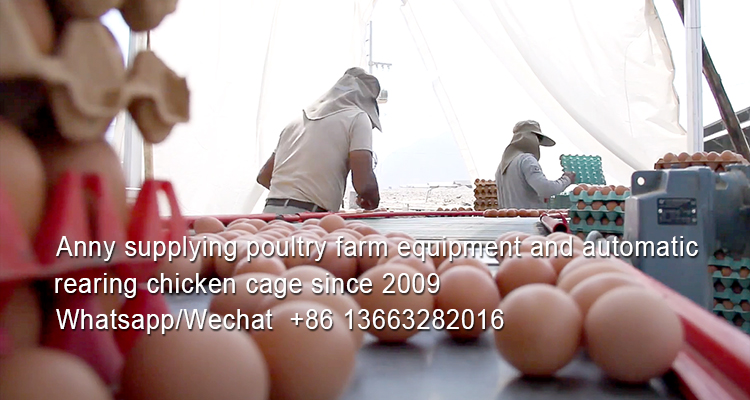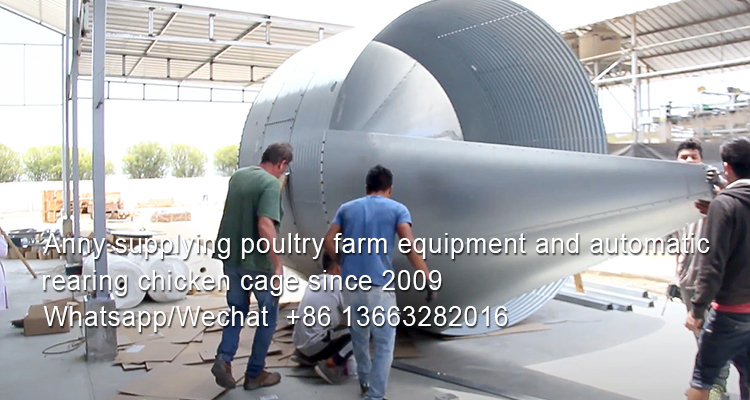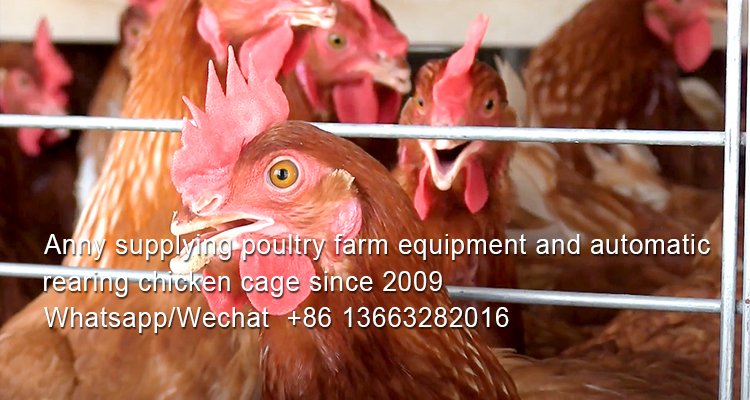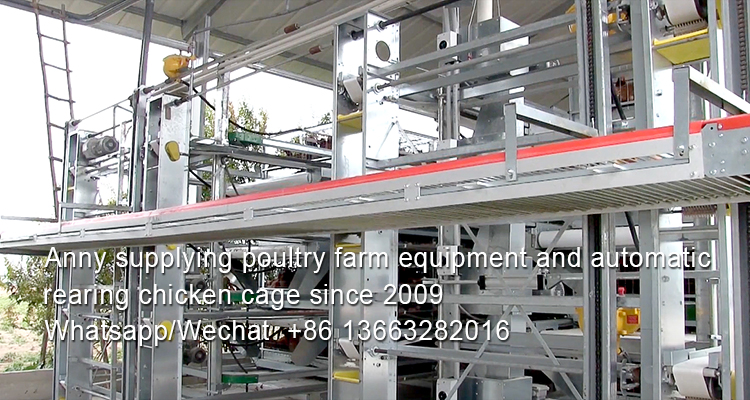E-mail:sales@bestchickencage.com
E-mail:sales@bestchickencage.com
The battery cage system adopts hot-dip galvanized structure, which is not easy to conduct heat in the chicken cage. A caged layer, eating a normal ration and laying at a rate of 80%, will produce about 180 kilocalories of heat every day. Thus 10,000 layers will produce as much heat in a day as a furnace burning 231 litres of fuel oil. This means that on a warm summer day, a ventilation failure could result in a rise in the temperature, within the building, of 16°C in one hour. On the other hand, encounter extremely cold environment. It is not enough to rely solely on the cage net of the battery cage system, but also need insulation measures.
When the hen is in a comfortable environmental temperature (21-25°C) she will lose most of that heat by sensible means. Sensible heat loss is by three pathways:
1.Conduction, whereby she touches a surface cooler than her own surface, for example the floor of the cage or the sides of a cool water trough;
2.Convection, whereby a cool breeze carries heat from her body;
3.Radiation, the electromagnetic process whereby heat moves from a warmer to a cooler surface without using a medium (heat flows to the earth from the sun by radiation).
If you know more about your local chicken breeds, you will consider choosing the cage equipment you want. We have more than ten years of experience in this field. Here are our pictures. If you are interested, please contact us.




When the laying hen is in a very warm environment (28-35°C) she must work at losing the heat she produces. She does so by raising and spreading her wings and separating herself from other birds if possible. Despite her best efforts, however, heat loss by sensible means decreases and loss by latent means (evaporation) increases. One reason is that, as the environmental temperature increases, the difference between the temperature of the hen's body (41°C) and the surrounding air, equipment and walls becomes very small. Thus she cannot readily lose heat by sensible means and must do so by evaporation. A second reason is that the evaporation of water uses a lot of heat - it is an effective way for her to keep cool.
How does she go about evaporating water since she does not have sweat glands? She does it by panting, similar to the dog. The hen can easily increase her respiration rate to 10 times normal and, in addition, indulges in gular (throat) flutter to aid in evaporation. One can readily see the rapid throat movement in panting birds. This throat flutter moves air in and out of the throat area and increases evaporation without such air entering the lungs. During a hot, dry day this is very efficient but on a hot, humid day the hen must pant more to keep cool. This evaporation means that a readily available supply of clean, fresh water is vital.
The heat from the laying hen, either in sensible or latent form, must be removed from the building. What can be done to facilitate heat removal from birds and buildings in hot weather?
Feed and Lighting
During hot weather it is extremely important to monitor feed consumption daily, to ensure an adequate intake of nutrients on a per bird basis. This is particularly important for the 24 to 30 week old pullet. Special feed formulations do exist for summer feeding. Consult your feed company for details. Stirring existing feed within the trough by operating feed lines between feedings helps increase consumption. Running the feeders early in the morning will stimulate feed consumption during the cooler hours of the day. Almost all battery cage systems are equipped with automatic temperature control devices, and can even achieve remote and automatic control.
The lighting system time clocks should be set to come on in the early morning, cooler hours, i.e. before 6:00 a.m.The use of battery cage system to achieve automatic temperature control, can greatly reduce labor costs.
Ventilation System Management
1.Air-inlet baffles must control the inlet air to provide proper air movement, even distribution and proper house static pressure. Automatic baffle controllers using a static pressure sensor are recommended. A typical installation is shown in Figure 2.
2.Without automatic baffle control, adjust inlet baffles to keep the house static pressure within an acceptable range as fans turn on and off. In hot weather, aim for 0.05 in. W.G. In cold weather, 0.08 in. W.G.
3.A heat stress problem can occur any time during the year if the ventilation system fails to work properly. In winter when large fans are covered and outside doors on air-intakes are closed, it is important to ensure that there is adequate back-up fan capacity to cool the barn. An equipment failure at this time is just as serious as in the summer. Check the high temperature warning system regularly year round and be especially sure that winter fans are in working order.
Our China battery cages system and poultry quipment Factory
Hebei Best Machinery And Equipment Co., Ltd.,found in 1996, 360KM from BEIJING city, from raw materials to finished products, strict implementation of ISO 9001:2008 quality management system.
Our Nigerian branch battery cages and poultry equipment factory
Rose of Sharon Plaza by Oko filing bus stop, Igando road, opposite Oando filling station, Lagos, production line is from our Chinese factory directly, 3 to 5 years longer using than local battery cages.
If you have any plan on poultry farm, please free to contact me, I supplying farm equipment and automatic rearing battery cage since 2009.
Anny Wang, Whatsapp/Wechat +86 13663282016
SEND YOUR MESSAGE TO US
(* We will reply your inquiry to this Email as soon as we see it.)RECENT BOLGS
CONTACT US